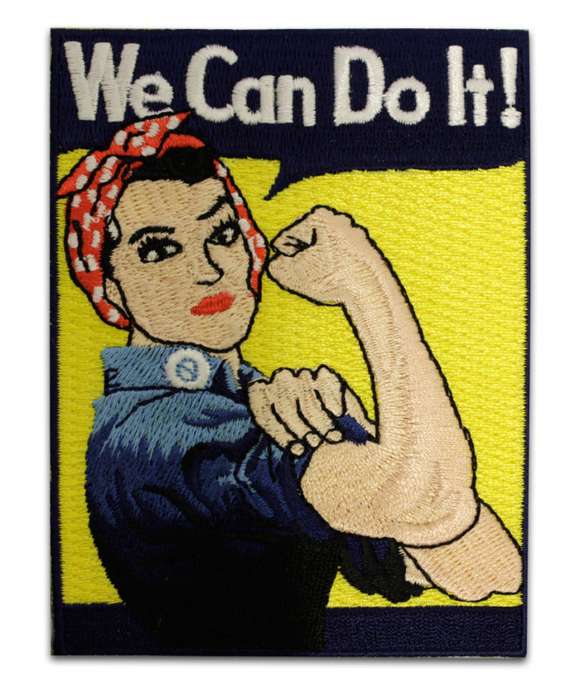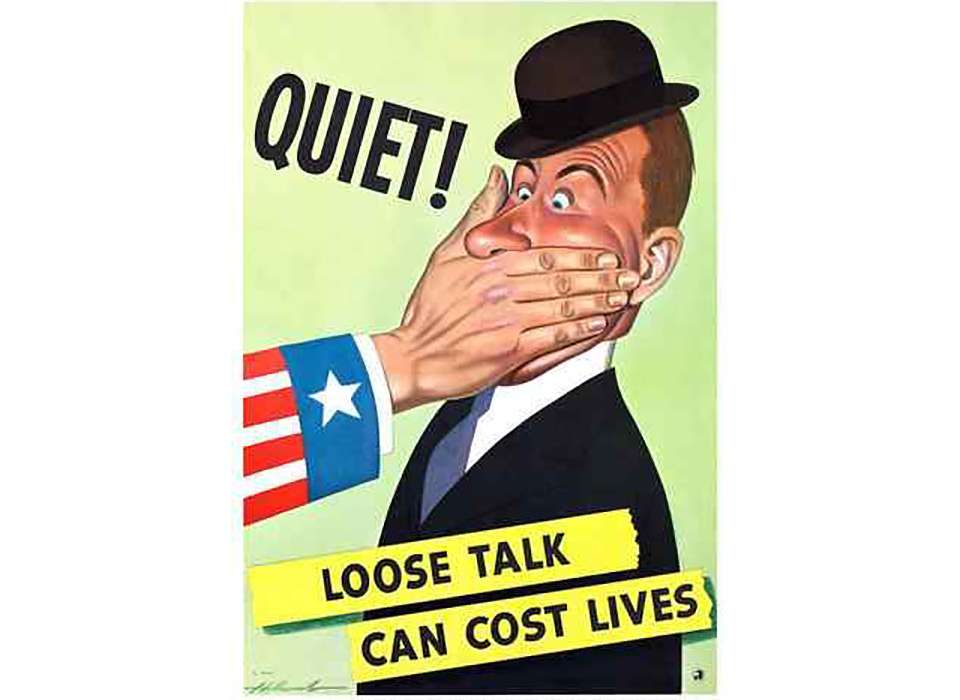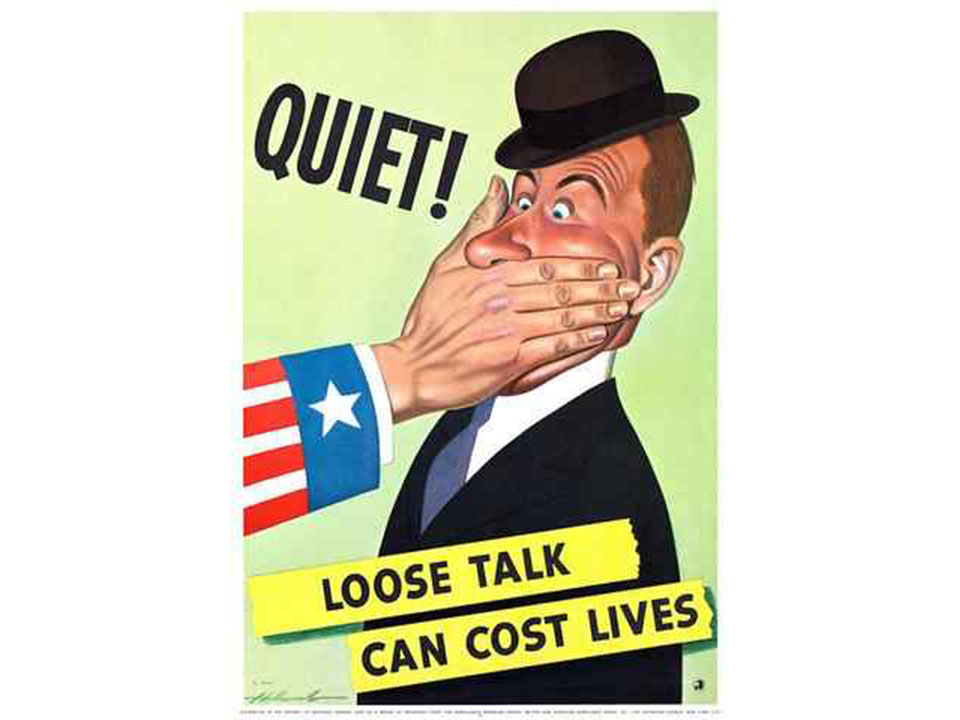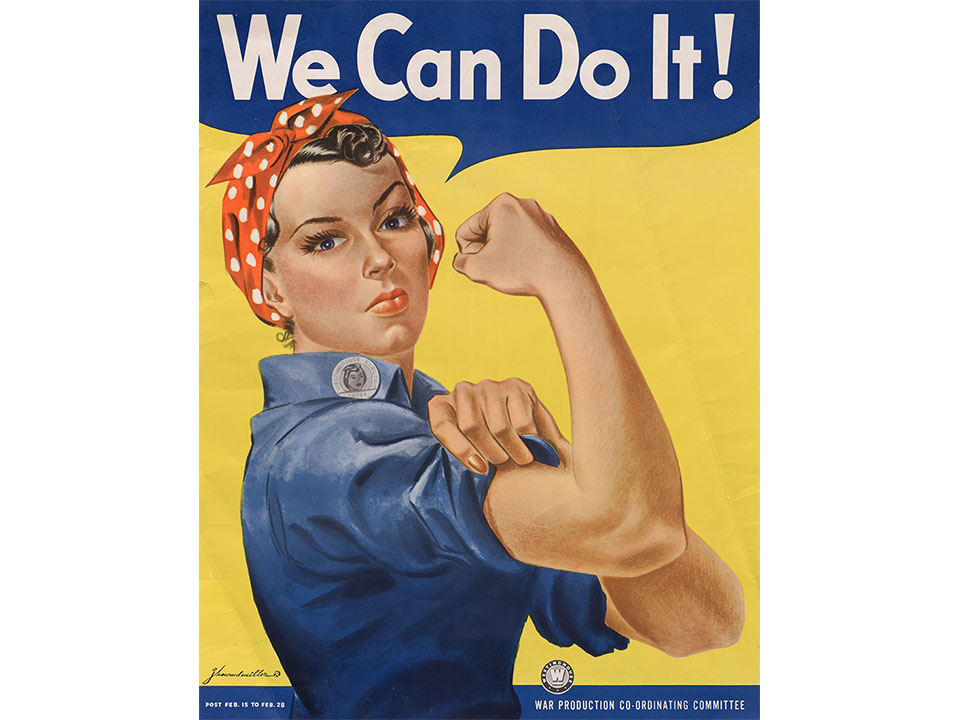During World War II, the US government waged a constant battle for the hearts and minds of the public. Persuading Americans to support the war effort became a wartime industry, just as important as producing bullets and planes. The Office of War Information (OWI) was formed in 1942 to oversee the propaganda initiative, scripting and distributing the government’s messages. Artists, filmmakers, and intellectuals were recruited to work on this creative “factory floor.” They produced posters, pamphlets, newsreels, radio shows, and movies-all designed to create a public that was 100 percent behind the war effort.
Posters were an important part of the OWI’s output. They were mass produced and distributed around the country and hung in train stations, post offices, schools, churches, factories, and grocery stores. Posters were produced to encourage and inspire Americans, but also to warn, scold, and scare Americans as well. They used psychological tactics, guilt, and emotions to appeal to the patriotism and loyalty of the public. Posters addressed things like safety, urging Americans to wear white when walking during blackouts so they would not be hit by a car and to be careful at work so they were not injured, both slowing production and wasting valuable hospital resources. A figure called “Axidunce” was very careless and helped the Axis foes by causing accidents. He was assisted by “Benny the Bungler.” Responsible, healthy living was encouraged, particularly because of the effects of vice on production. If you stayed out all night drinking, you would be hungover at work or would call in sick and the country was counting on you to help win the war.
Posters addressed the need for secrecy and stressed that blabbermouths could be murderers because talking about where your boyfriend was stationed or about what you were making at the factory too loudly could be overheard by enemy spies and lead to disaster. Americans were urged to avoid waste of food, clothes, rubber, water, and gasoline. They were instructed to grow their own food, can and preserve, and also to stretch their rations— all for the sake of the soldiers. They were asked to contribute to the war funds by buying bonds. Americans were asked to band together, to work for Victory, and to remember Pearl Harbor.
There were so many messages out there and many of them have endured in public memory. They have been dusted off and used over and over for various causes. Some have become iconic like “Loose Lips Might Sink Ships” or one of the most widely recognized posters from World War II, “Rosie the Riveter.” The concept and icon of “Rosie the Riveter” continues to be adapted and used as a symbol for power and a testament to the spirit of the American woman. The poster by J. Howard Miller had several predecessors, a song “Rosie the Riveter” who was “Making history, working for victory,” and a Saturday Evening Post cover illustration by Norman Rockwell. Miller’s “Rosie” was commissioned as part of a series intended to raise morale at Westinghouse Electric, which was making helmet liners. “Rosie” falls outside of the OWI’s domain, as Miller was hired by Westinghouse’s War Production Coordinating Committee. The poster was intended to be displayed at the factory for only two weeks, from February 15 to February 28, 1943.
“Rosie the Riveter” and many other wartime propaganda posters remain relevant 75 years later. They have endured and evolved. Their messages continue to be called upon, adopted, and adapted. When you need a little motivation look back at World War II, give the muscles a flex, and think, “We Can Do It!”
For more on propaganda, see our teacher resources on From the Collection to the Classroom.

Museum Store
Rosie the Riveter was a popular icon of World War II and represented American women doing their part for the War effort. Visit the Museum Store to browse through Rosie the Riveter themed gifts and accessories.
Kim Guise
Kimberly Guise holds a BA in German and Judaic Studies from the University of Massachusetts Amherst. She also studied at the Universität Freiburg in Germany and holds a masters in Library and Information Science (MLIS) from Louisiana State University. Kim is fluent in German, reads Yiddish, and specializes in the American prisoner-of-war experience in World War II.
Cite this article:
MLA Citation:
APA Citation:
Chicago Style Citation:











